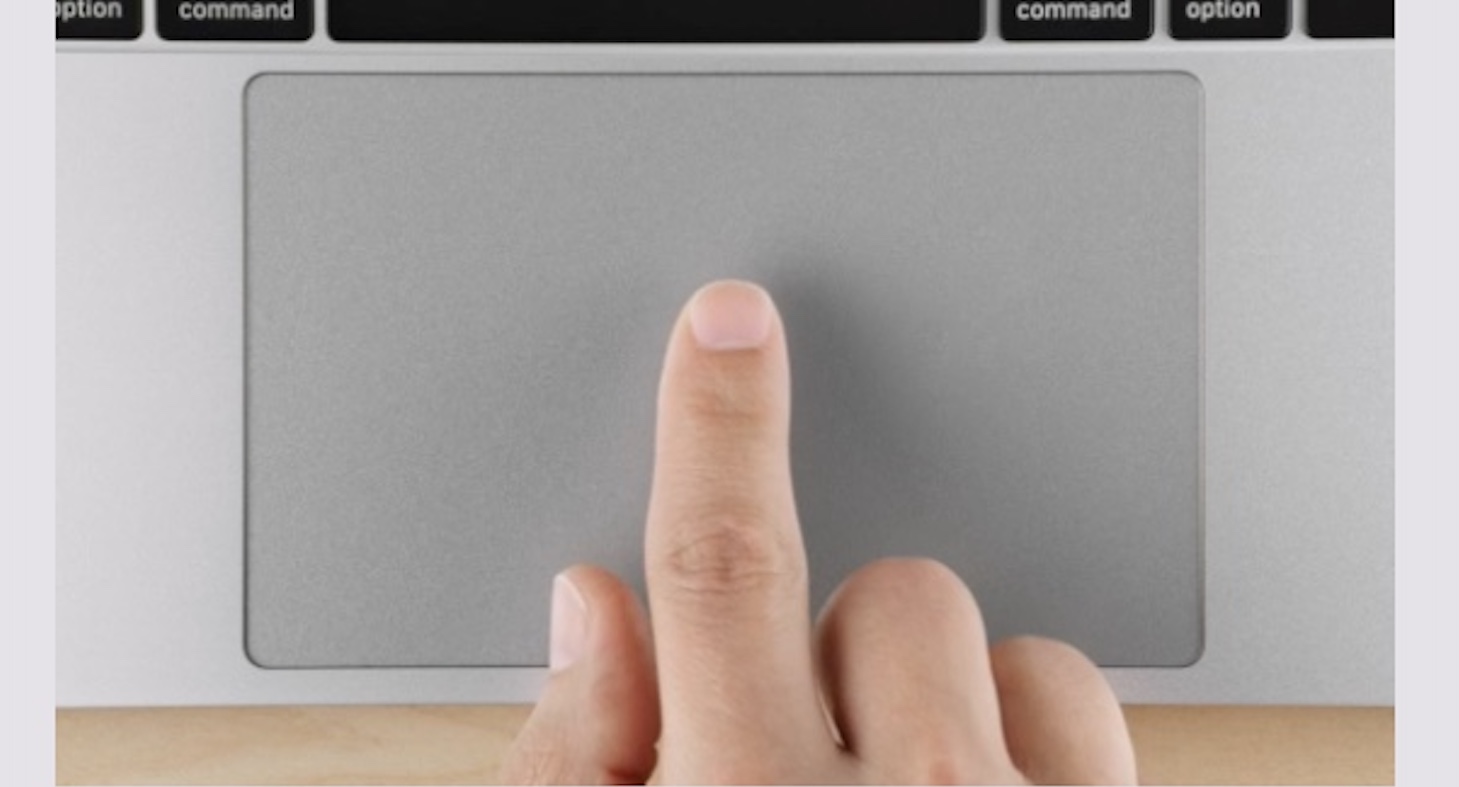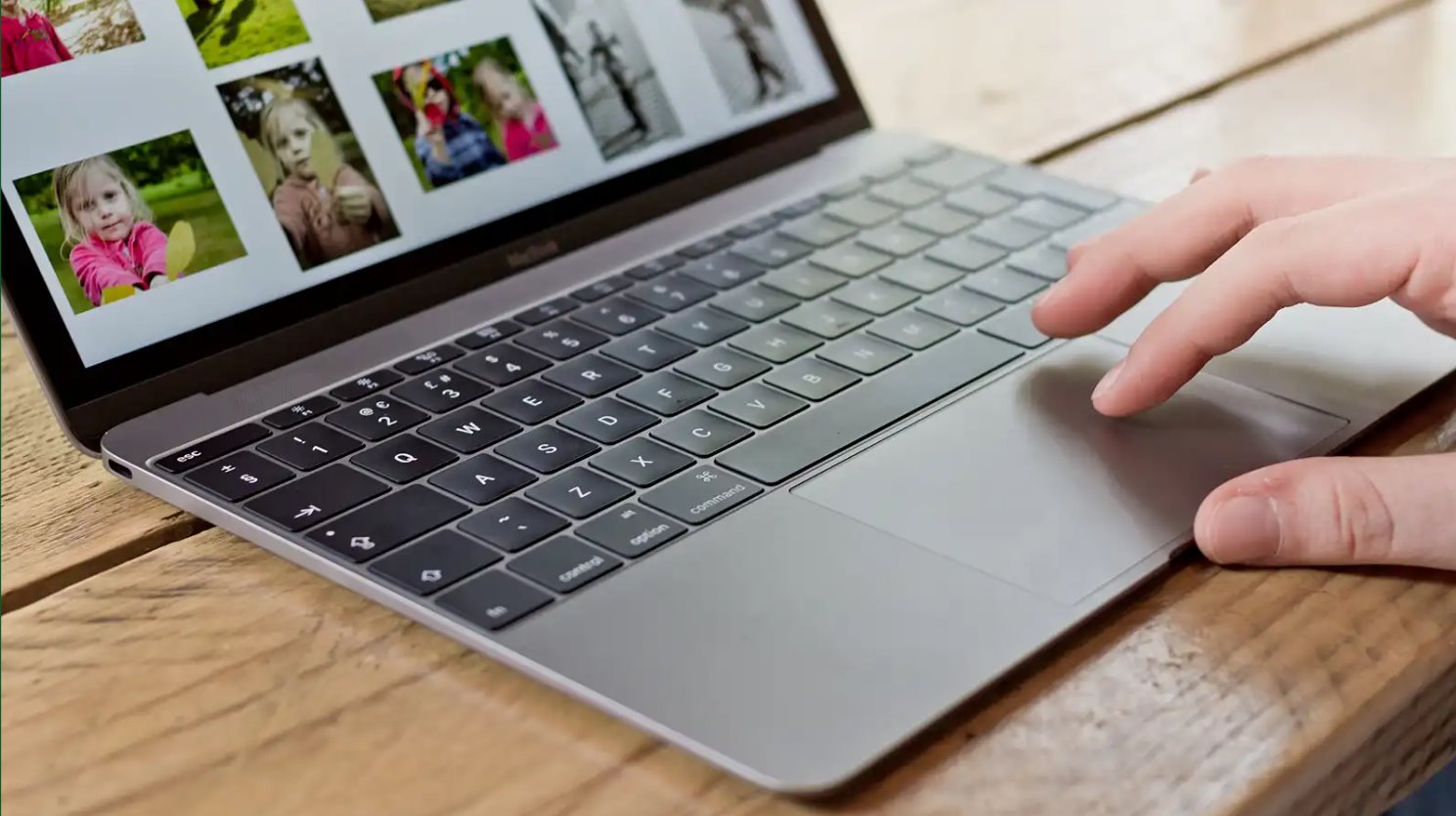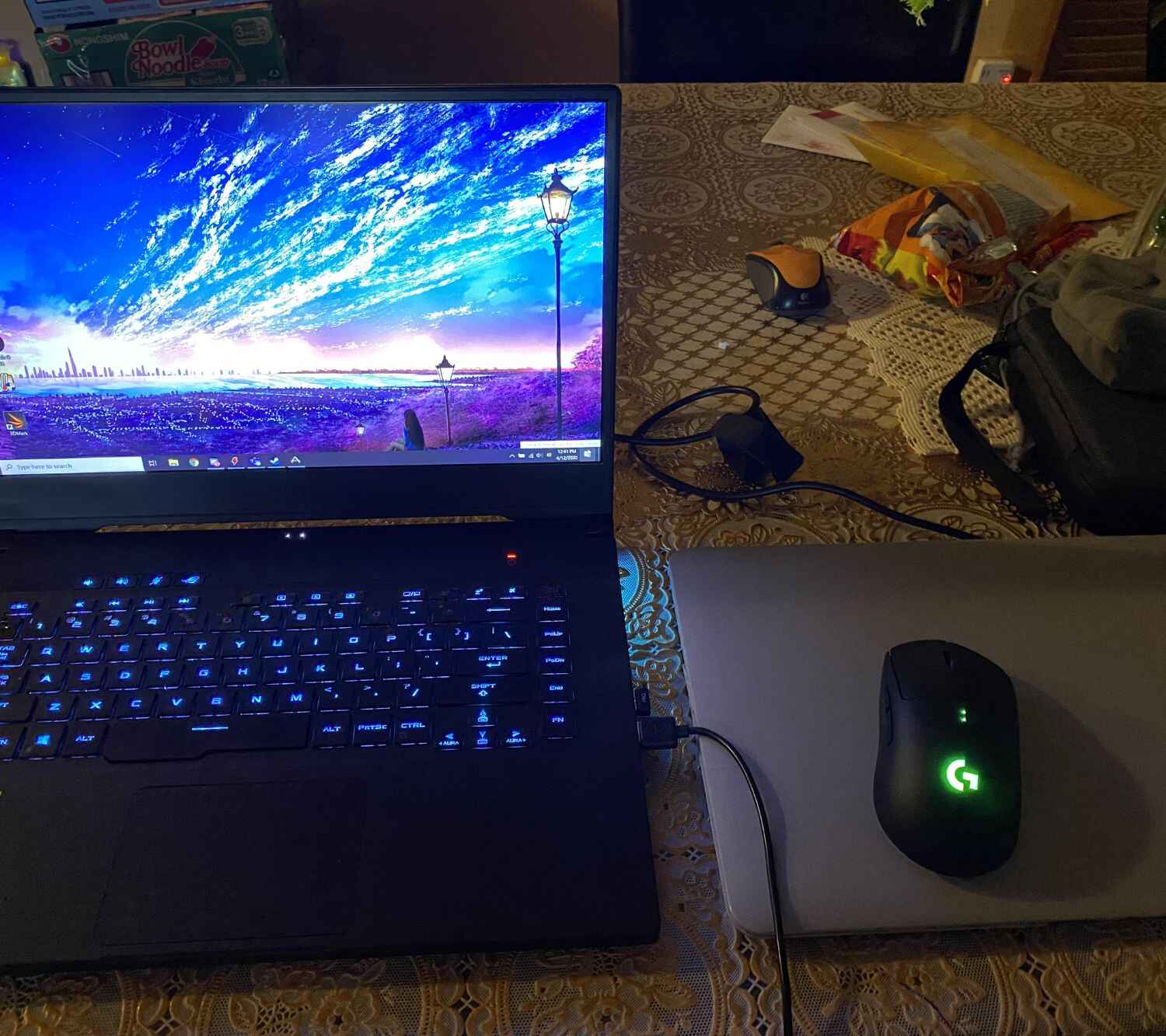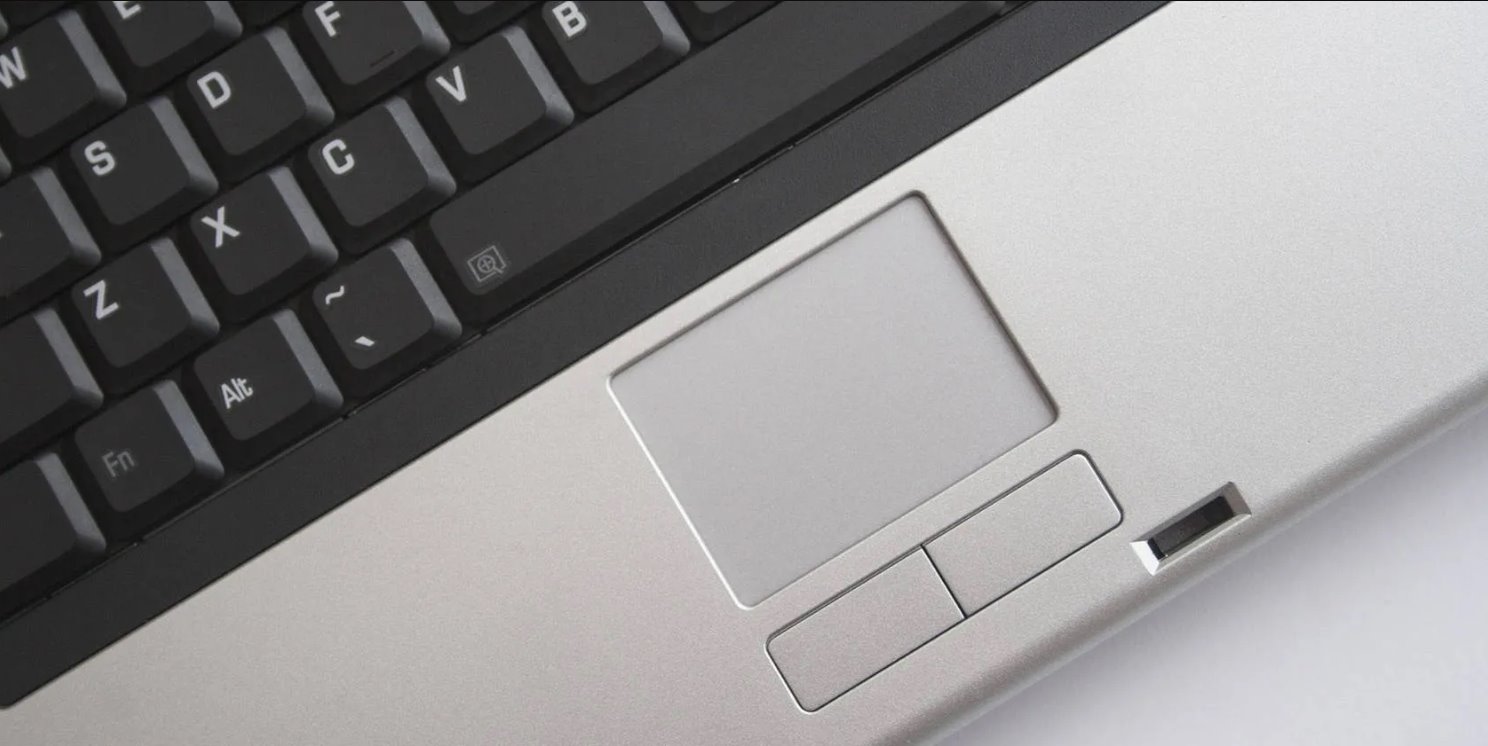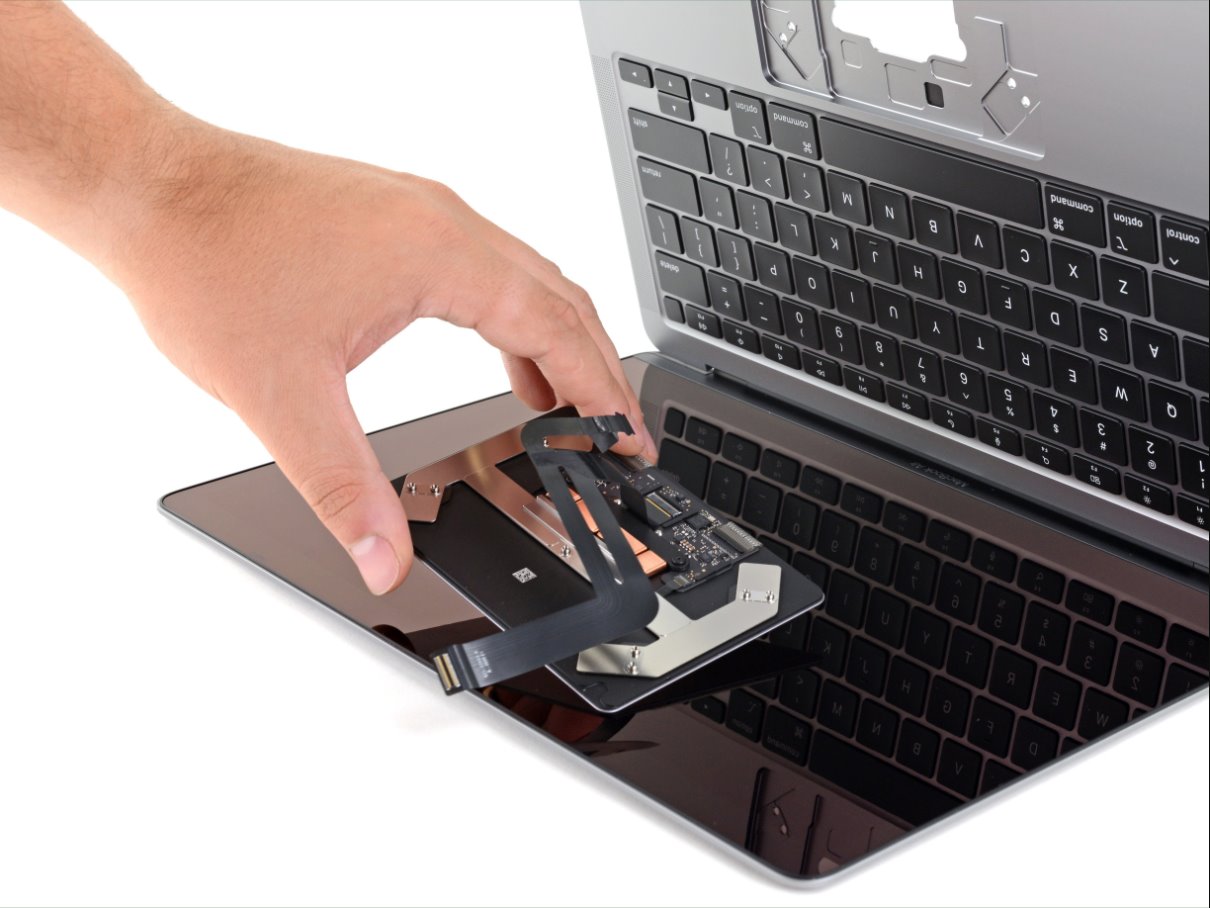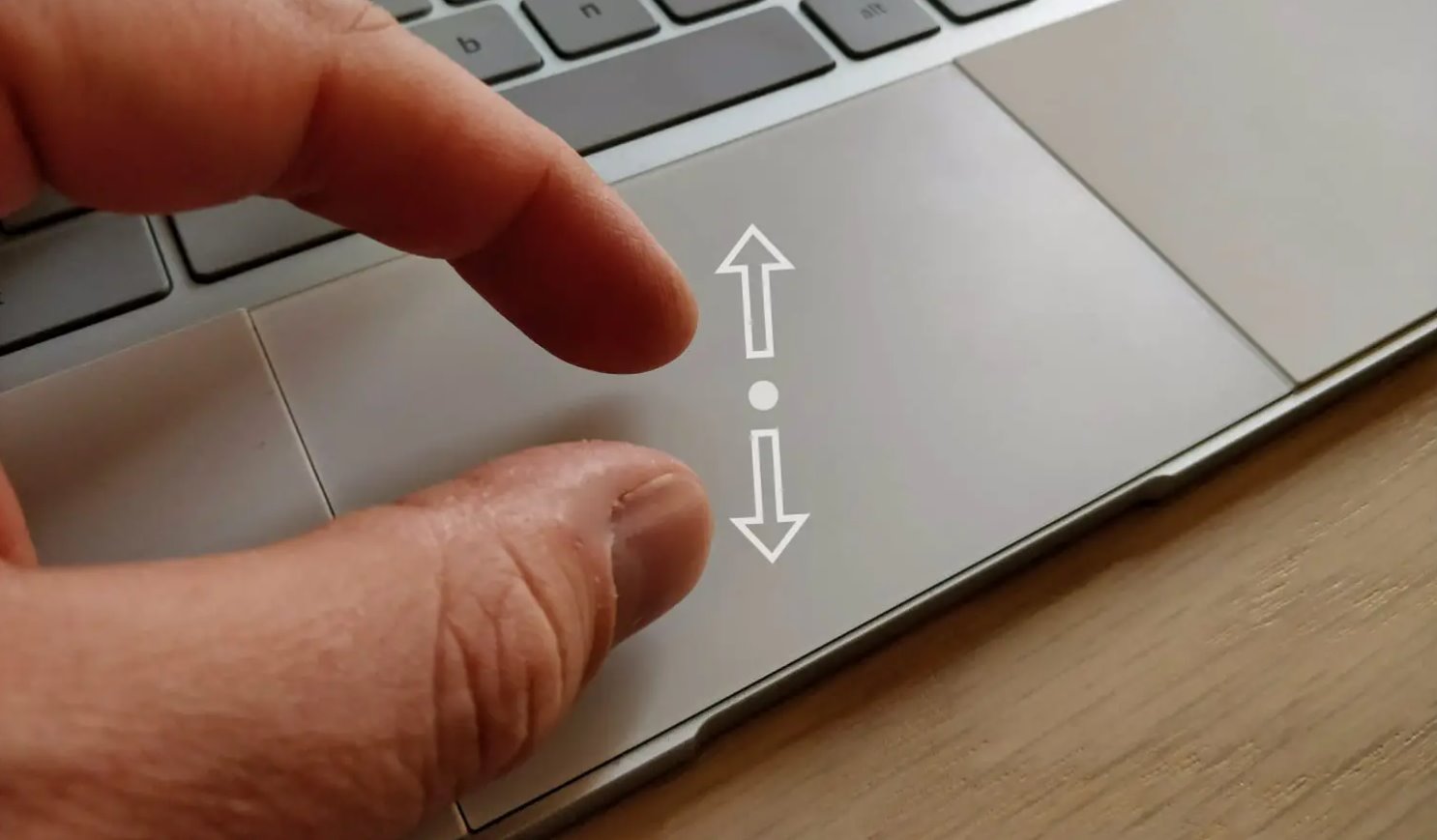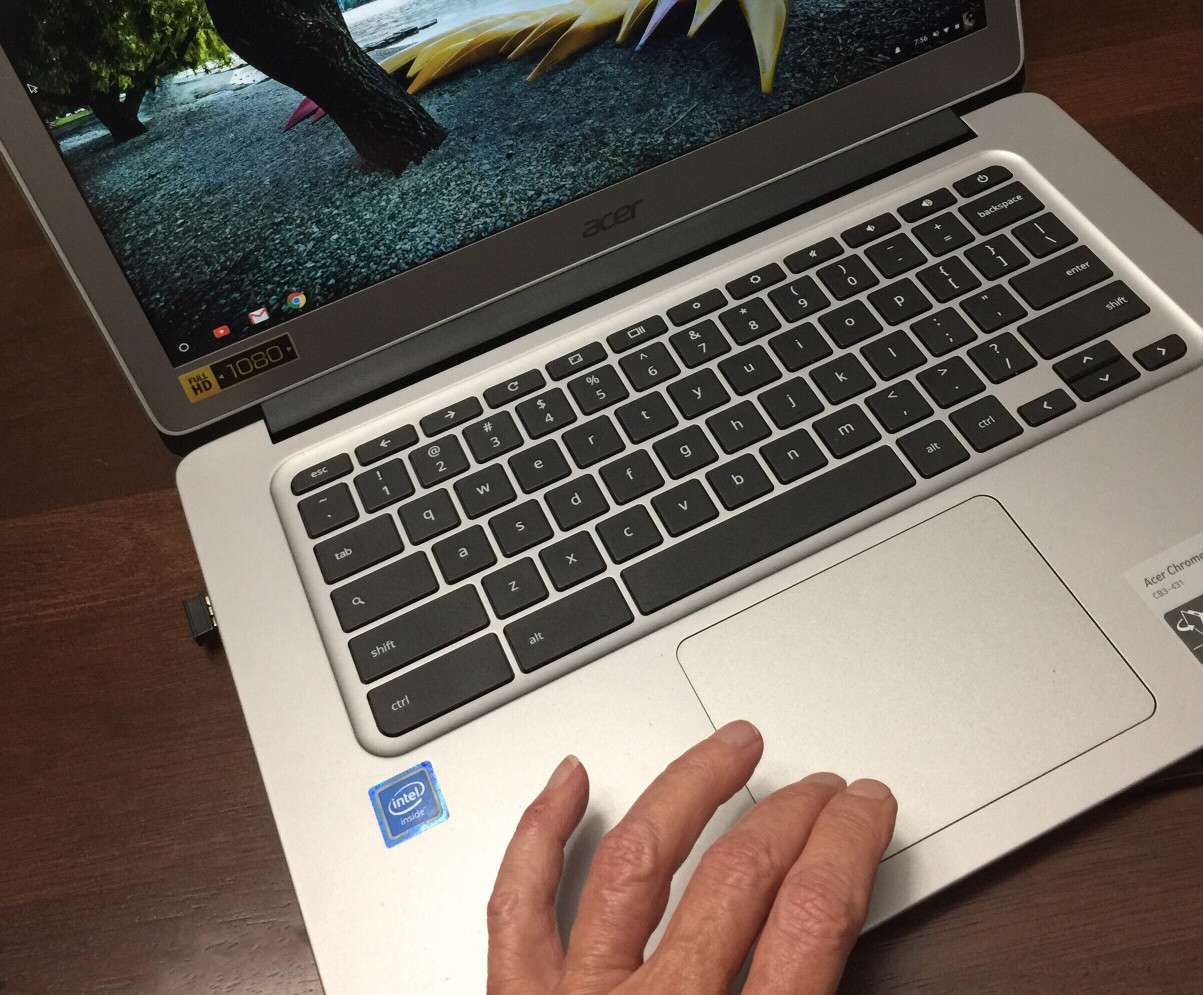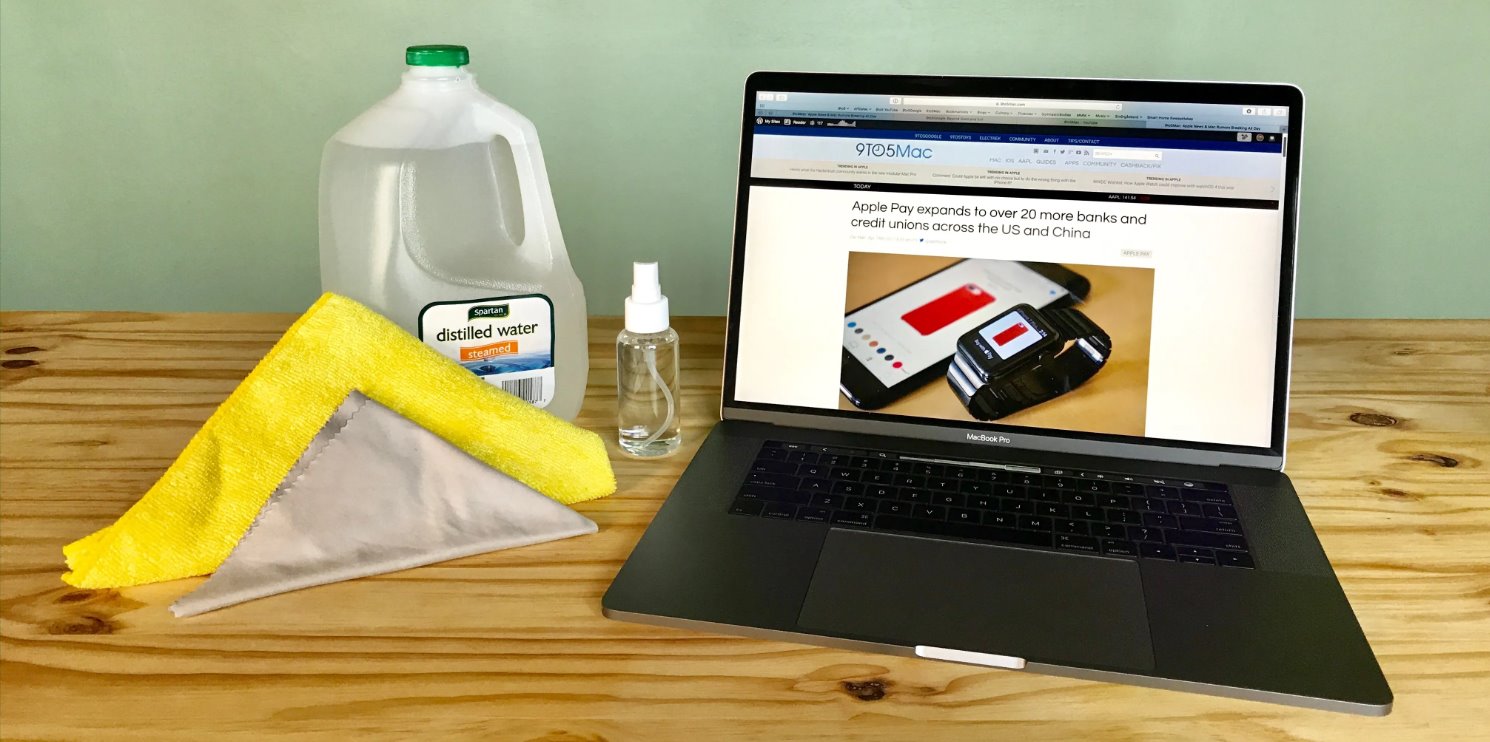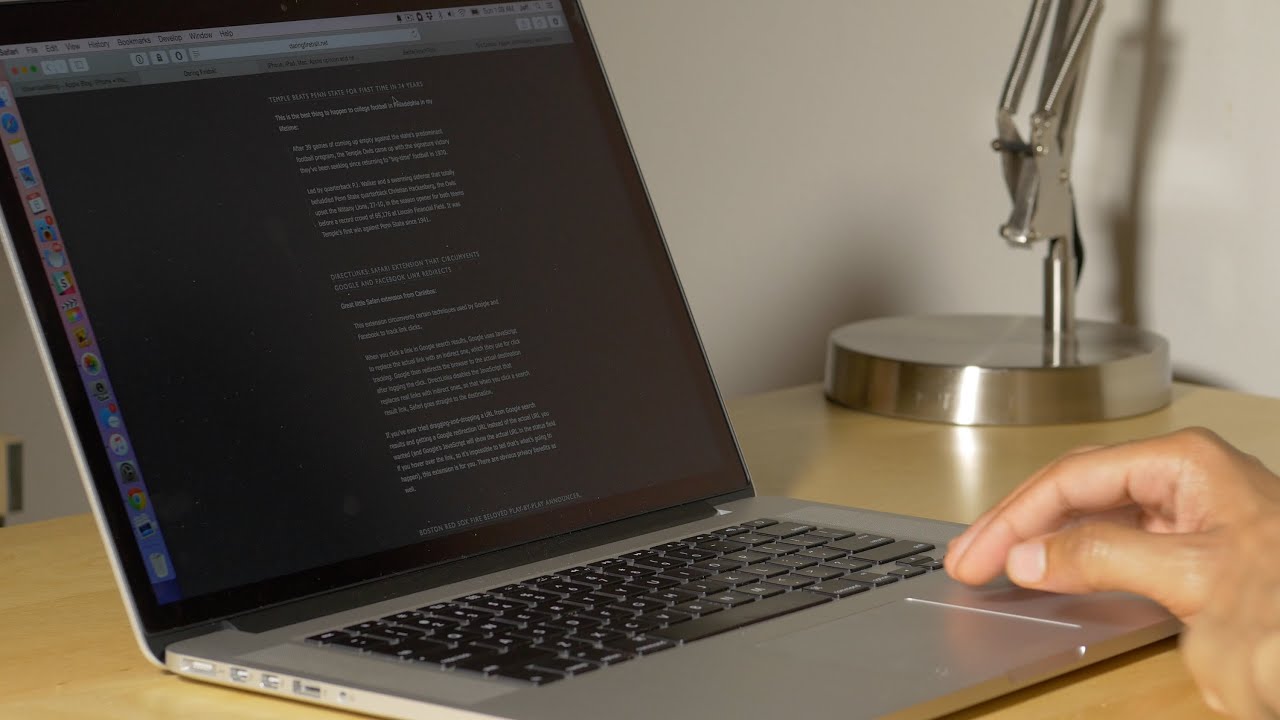Introduction
Have you ever encountered the frustrating issue of your Mac trackpad not clicking? It can be a real inconvenience, making it difficult to navigate and interact with your device. This problem can occur for various reasons, ranging from physical damage to software glitches. In this article, we will explore the common causes of a non-clicking trackpad on your Mac and discuss possible solutions to resolve the issue.
When your Mac trackpad stops clicking, it can be attributed to both hardware and software factors. Physical damage, wear and tear, incorrect settings, or outdated software can all contribute to this problem. Before diving into potential solutions, it’s important to assess the condition of your trackpad and rule out any physical issues.
It’s worth noting that the troubleshooting steps mentioned in this article are primarily for MacBooks with built-in trackpads. If you have an external trackpad connected to a Mac desktop, some of the solutions might still apply, but you may need to explore additional methods.
Now that we have a general understanding of the issue, let’s dive into the common reasons why your Mac trackpad may not be clicking and explore the steps to resolve it. By the end of this article, you should have a clearer idea of how to troubleshoot and fix this particular problem.
Common Reasons for Trackpad Not Clicking
There can be several reasons why your Mac trackpad is not clicking. Understanding these common causes can help you identify and resolve the issue more effectively. Here are some of the frequent culprits:
- Physical Damage: One of the primary reasons for a non-clicking trackpad is physical damage. Dropped laptops, liquid spills, or accidental impacts can impair the functioning of the trackpad. If you recently experienced any of these incidents, it’s important to thoroughly examine your trackpad for any visible signs of damage.
- Improper Trackpad Settings: Occasionally, incorrect settings can hinder the click functionality of your trackpad. It’s possible that your trackpad settings have been inadvertently changed or adjusted, resulting in the inability to click. Checking and adjusting the settings can often resolve this issue.
- Outdated Software: An outdated operating system or trackpad-specific software can cause compatibility issues, leading to the trackpad not clicking. Keeping your macOS and trackpad drivers up to date ensures optimal performance and helps avoid potential glitches.
- Trackpad Calibration: Sometimes, a misaligned or improperly calibrated trackpad can lead to the non-clicking issue. It’s essential to ensure that your trackpad is calibrated correctly, allowing it to recognize and respond accurately to your touch and click gestures.
- Dirt or Debris: Accumulated dirt, dust, or debris on or around the trackpad can interfere with its proper functioning. Cleaning the trackpad surface and removing any obstructions might be necessary to restore its clicking capability.
- System Glitches or Malfunctions: Occasionally, temporary software glitches or system malfunctions can cause the trackpad to stop clicking. In such cases, a simple system restart or resetting the System Management Controller (SMC) can often resolve the issue.
These are just a few of the common reasons why your Mac trackpad may not be clicking. Understanding these factors can help you eliminate possible causes and narrow down the troubleshooting path. In the following sections, we will discuss various solutions and steps you can take to address this problem.
Check the Physical Condition of the Trackpad
The first step in troubleshooting a trackpad that isn’t clicking is to assess its physical condition. Physical damage or wear and tear can often be the cause of this issue. Here are some steps you can take to check the physical condition of your Mac trackpad:
- Visibly Inspect the Trackpad: Carefully examine the trackpad for any visible signs of damage, such as cracks, dents, or loose parts. If you notice any physical damage, it is likely the cause of the non-clicking issue. In such cases, it may be necessary to seek professional assistance or consider replacing the trackpad.
- Check for Trackpad Misalignment: In some instances, the trackpad may become misaligned, causing it to lose its clicking functionality. Gently press down on the trackpad to see if it is securely positioned; it should be flush with the surrounding surface. If you notice any misalignment, try carefully adjusting the trackpad to its proper position.
- Ensure Cleanliness: Dirt, dust, or debris can accumulate on the trackpad surface, obstructing the click mechanism. Use a clean microfiber cloth or a soft brush to gently clean the trackpad. Be cautious not to apply excessive pressure or use liquids that could damage the trackpad.
- Test External Mouse: Connect an external mouse to your Mac and check if it clicks properly. This step will help determine whether the issue is specific to the trackpad or a broader input problem. If the external mouse works fine, it indicates that the issue is likely with the trackpad itself.
By checking the physical condition of your trackpad, you can identify any visible damage or misalignment that may be causing the non-clicking issue. If you do encounter any physical damage, it is recommended to seek professional assistance or contact Apple Support for further guidance. If the trackpad appears to be in good physical condition, proceed to the next steps to troubleshoot potential software-related causes.
Adjusting Trackpad Settings
If your Mac trackpad is not clicking, one possible cause could be incorrect trackpad settings. Adjusting these settings can often help restore the click functionality. Here are the steps you can take to adjust the trackpad settings:
- Go to System Preferences: Click on the Apple menu in the top-left corner of the screen and select “System Preferences” from the dropdown menu.
- Open Trackpad Settings: In the System Preferences window, locate and click on the “Trackpad” icon. This will open the trackpad settings panel.
- Check Click Settings: In the trackpad settings panel, ensure that the “Click” settings are appropriately configured. Make sure the “Enable Clicking” option is checked. You can also adjust the click pressure sensitivity to your preference.
- Disable Force Click: If you have the “Force Click and haptic feedback” feature enabled, try disabling it temporarily. It is located in the “Point & Click” tab of the trackpad settings. Disabling this feature can sometimes resolve issues with the regular click functionality.
- Test the Trackpad: After adjusting the trackpad settings, test if the click functionality has been restored. Try clicking with different pressure levels to ensure that the trackpad is responding accurately.
If adjusting the trackpad settings doesn’t resolve the issue, it is advisable to move on to other troubleshooting steps, such as resetting the SMC or updating the macOS. However, if the click functionality returns after adjusting the settings, you can continue using your Mac trackpad as normal.
Remember, the specific steps and options in the trackpad settings may vary depending on the macOS version and the specific model of your Mac. If you’re having trouble finding or adjusting the trackpad settings, consult the Apple Support documentation or reach out to Apple Support for further assistance.
Resetting the System Management Controller (SMC)
If adjusting the trackpad settings didn’t resolve the issue, another potential solution is resetting the System Management Controller (SMC). The SMC is responsible for managing various hardware functions, including the trackpad, on your Mac. Resetting the SMC can sometimes help restore the trackpad’s click functionality. Here’s how to reset the SMC on different Mac models:
- MacBook with Non-removable Battery:
- Shut down your MacBook.
- Connect the power adapter to your MacBook.
- Press and hold the left Shift, Control, and Option keys, along with the power button, for about 10 seconds.
- Release all the keys and the power button simultaneously.
- Turn on your MacBook and test the trackpad to see if the click functionality has been restored.
- MacBook with Removable Battery:
- Shut down your MacBook.
- Unplug the power adapter and remove the battery.
- Hold down the power button for about 5 seconds.
- Reinsert the battery, connect the power adapter, and turn on your MacBook.
- Test the trackpad to see if it is clicking properly.
- Mac Desktop (iMac, Mac Pro, Mac Mini):
- Shut down your Mac.
- Unplug the power cord and wait for 15 seconds.
- Reconnect the power cord and wait for a few seconds.
- Turn on your Mac and check if the trackpad is clicking correctly.
After resetting the SMC, your Mac may restart and some system settings may be reset. If the trackpad click functionality is restored, you can continue using your Mac as usual. However, if the issue persists, try the next solution: updating the macOS.
Keep in mind that resetting the SMC should be done with caution, as it affects the overall hardware functionality of your Mac. If you’re unsure or uncomfortable performing this procedure, it’s advisable to seek assistance from an authorized Apple service provider or Apple Support.
Updating the macOS
If your Mac trackpad is still not clicking after adjusting the settings and resetting the SMC, it’s worth considering whether your macOS version is up to date. Outdated software can sometimes cause compatibility issues with hardware components, including the trackpad. Updating your macOS to the latest version can help resolve such issues. Here’s how to update the macOS:
- Check for Updates:
- Click on the Apple menu in the top-left corner of the screen and select “System Preferences” from the dropdown menu.
- Click on “Software Update.” Your Mac will automatically check for available updates and display them in the Software Update window.
- Install Updates:
- If any updates are available, click on the “Update Now” or “Install” button to start the update process.
- Wait for the updates to download and install. This may take some time depending on the size of the update and your internet connection speed.
- Restart your Mac if prompted after the updates have been installed.
After updating your macOS, test the trackpad to see if the click functionality has been restored. In many cases, updating to the latest version can resolve software-related issues that may be affecting the trackpad’s ability to click. It’s recommended to keep your macOS up to date to ensure optimal performance and compatibility with your Mac’s hardware.
If the trackpad is still not clicking after updating the macOS, or if there are no updates available, it may be necessary to explore other troubleshooting methods or seek professional assistance. However, before moving on to advanced solutions, there are a few more steps you can try, such as cleaning the trackpad or calibrating its sensitivity, which we will discuss in the next sections.
Cleaning the Trackpad
If your Mac trackpad is still not clicking, it’s worth taking the time to clean it. Over time, dirt, dust, or debris can accumulate on or around the trackpad, obstructing its normal functioning. Cleaning the trackpad surface and removing any obstructions may help restore the click functionality. Follow these steps to clean your trackpad:
- Gather Cleaning Materials: Before you begin, gather a microfiber cloth or a soft lint-free cloth and a small amount of isopropyl alcohol.
- Power Down Your Mac: Shut down your Mac and unplug it from the power source.
- Dampen the Cloth: Moisten the cloth slightly with isopropyl alcohol. Make sure it is damp, not dripping wet.
- Clean the Trackpad Surface: Gently rub the damp cloth over the trackpad surface in a circular motion. Be cautious not to apply too much pressure or allow any liquid to seep into the trackpad.
- Clean the Edges and Surrounding Area: Pay attention to the edges and the surrounding area of the trackpad. Wipe away any debris or dirt that may have accumulated there.
- Dry the Trackpad: After cleaning, allow the trackpad to air dry for a few minutes before turning on your Mac.
- Check the Trackpad: Once the trackpad is dry, turn on your Mac and test if the click functionality has been restored.
Regularly cleaning your trackpad can help prevent dirt buildup and maintain its optimal performance. However, exercise caution when cleaning, as excessive pressure or excessive liquid can damage the trackpad. If cleaning the trackpad doesn’t solve the issue, it may be necessary to calibrate it or seek professional assistance.
Calibrating the Trackpad
If your Mac trackpad is still not clicking after trying the previous troubleshooting steps, another option to consider is calibrating the trackpad. Sometimes, a misaligned or improperly calibrated trackpad can lead to the non-clicking issue. By calibrating the trackpad, you can ensure that it recognizes and responds accurately to your touch and click gestures. Here’s how to calibrate the trackpad:
- Go to System Preferences: Click on the Apple menu in the top-left corner of the screen and select “System Preferences” from the dropdown menu.
- Open Trackpad Settings: In the System Preferences window, locate and click on the “Trackpad” icon. This will open the trackpad settings panel.
- Open Accessibility Options: In the trackpad settings panel, click on the “Accessibility” button. This will open the accessibility options for the trackpad.
- Enable Calibrate: Look for the “Calibrate” button or option within the accessibility settings. Click on it to begin the calibration process.
- Follow On-screen Instructions: Follow the on-screen instructions to calibrate your trackpad. This usually involves tapping and clicking on specific areas of the trackpad as directed.
- Test the Trackpad: After calibrating the trackpad, test if the click functionality has been restored. Try clicking with different pressure levels to ensure that the trackpad is responding accurately.
By calibrating the trackpad, you can realign it and ensure that it functions correctly. Keep in mind that the specific calibration options and steps may vary depending on the macOS version and the specific model of your Mac. If you cannot find the calibration option or encounter difficulties in the process, consult the Apple Support documentation or reach out to Apple Support for further assistance.
If calibrating the trackpad doesn’t resolve the issue, it may be necessary to seek professional assistance or consider hardware repair options. However, before taking such steps, it’s worth ensuring that you have exhausted all possible software-related solutions.
Seeking Professional Help
If you have tried all the previous troubleshooting steps and your Mac trackpad is still not clicking, it may be time to seek professional help. Professional assistance can be beneficial when dealing with more complex or hardware-related issues. Here are some options to consider:
- Contact Apple Support: Reach out to Apple Support for guidance and assistance. They can provide you with specific instructions based on your Mac model and help you troubleshoot the issue remotely.
- Visit an Apple Authorized Service Provider: If you have an Apple Authorized Service Provider nearby, consider scheduling an appointment to have your Mac inspected and repaired. These technicians are trained by Apple and can provide professional assistance.
- Consider a Repair Service: If your Mac is out of warranty or you prefer to use a third-party service, you can seek assistance from a reputable computer repair service. Ensure that the service provider has experience with Apple products and a good track record.
When reaching out for professional help, be prepared to provide information about your Mac model, the troubleshooting steps you have already taken, and any error messages or symptoms you have observed. This will help the technician diagnose the issue more efficiently and provide a suitable solution.
Keep in mind that seeking professional help may involve a cost, depending on warranty coverage and the nature of the problem. However, it can be a worthwhile investment to get your trackpad functional again and ensure the proper functioning of your Mac overall.
Remember to back up your important data before taking your Mac for repairs or service to prevent any potential data loss.
By seeking professional assistance, you can benefit from the expertise and experience of trained professionals who can diagnose and resolve more complex trackpad issues. They will have access to specialized tools and resources to ensure an accurate and reliable repair.
Conclusion
Dealing with a Mac trackpad that is not clicking can be frustrating, but thankfully, there are several troubleshooting steps you can take to resolve the issue. By understanding the common causes, such as physical damage, incorrect settings, outdated software, dirt or debris, and system glitches, you can better diagnose and address the problem.
In this article, we discussed various solutions, including checking the physical condition of the trackpad, adjusting trackpad settings, resetting the System Management Controller (SMC), updating the macOS, cleaning the trackpad, calibrating the trackpad, and seeking professional help. These steps are designed to help you restore the click functionality to your Mac trackpad.
It’s important to remember that the specific troubleshooting steps may vary depending on the macOS version and your specific Mac model. It’s always a good idea to consult the official Apple Support documentation or contact the Apple Support team for further assistance if needed.
If you’ve exhausted all the software-related solutions and the issue persists, seeking professional help from Apple Authorized Service Providers or reputable computer repair services is a viable option. These professionals have the expertise and resources to diagnose and address hardware-related problems.
Remember to keep your Mac and its trackpad clean and well-maintained to prevent future issues. Regular cleaning and updating your macOS to the latest version will help ensure optimal performance and functionality.
We hope this article has provided you with valuable insights and solutions to fix your Mac trackpad not clicking issue. With patience and the right troubleshooting steps, you can get your trackpad back in working order and enjoy a smooth and effortless user experience on your Mac.







